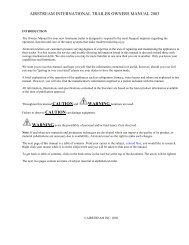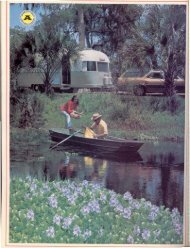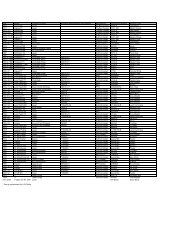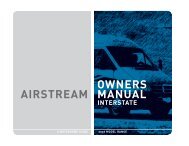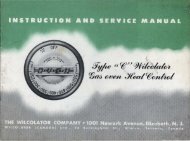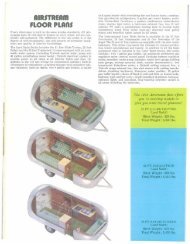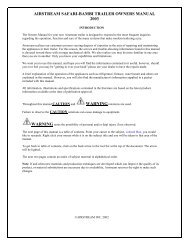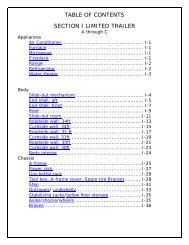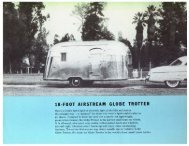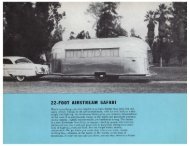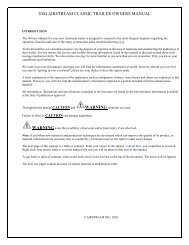Classic - Airstream
Classic - Airstream
Classic - Airstream
You also want an ePaper? Increase the reach of your titles
YUMPU automatically turns print PDFs into web optimized ePapers that Google loves.
Exterior<br />
wheel position using a conventional platform scale.<br />
Replacing Your Tires<br />
Proper Inspection and Storage of Tires<br />
Before taking your RV on a trip or when removing from an extended storage<br />
period, make it a practice to inspect the overall condition of your tires. Check<br />
for any type of condition or damage that might result in failure. A thorough<br />
check should include both inside and outside sidewalls, tread area and the<br />
condition of hardware such as valve stems, valve caps, and wheels. The tread<br />
should be checked for any unusual wear, cracking, penetrations and/or cuts.<br />
An uneven wear pattern can indicate misalignment or worn suspension parts.<br />
Since many RVs are used seasonally and sometimes stored for extended<br />
times, it is possible that tires will take many years to wear out. Tires, as any<br />
rubber product, will age over time. If tires show cracking in the sidewall or tread<br />
surfaces that are more than 2/32nds deep, they should be replaced before<br />
your next trip or vacation. Store your RV in a cool dry area away from major<br />
heat sources and extreme cold. An enclosed area is best with no exposure to<br />
electromagnetic sources such as generators or transformers. If you must keep<br />
your RV outside, cover your tires from direct sunlight. Take your RV to your Tire<br />
dealer for service to check or correct any of these conditions.<br />
It is possible to replace your tires with a different size in some instances to<br />
increase your load capacity with a different inflation pressure. If there is a reason<br />
to replace your tires with a different size, make sure the following checks are<br />
made before the purchase.<br />
• Does the replacement tire have the load capacity that is needed for my<br />
RV and will it fit properly inside the wheel well?<br />
• Will the overall diameter difference affect the speedometer or antilock<br />
braking system?<br />
• Is the increase in air pressure compatible with the maximum rated<br />
pressure stamped on the rim?<br />
• Is there enough dual spacing offset for the rear wheel positions?<br />
Tires used on most RVs are driven at or near maximum loads during hot<br />
weather and then are left idle for months. In normal use oils in the tire come to<br />
the surface during flexing and protect the rubber from ultraviolet light. But when<br />
left idle natural aging may cause the rubber to crack prematurely, especially in<br />
the sidewall area.<br />
Any tire on an RV that is over five years old should be inspected by a competent<br />
tire professional for cracking and replaced, even if it has no apparent tread<br />
wear. This is because a tire on a car or truck might last 80,000 to 120,000 miles<br />
D<br />
D - 15



